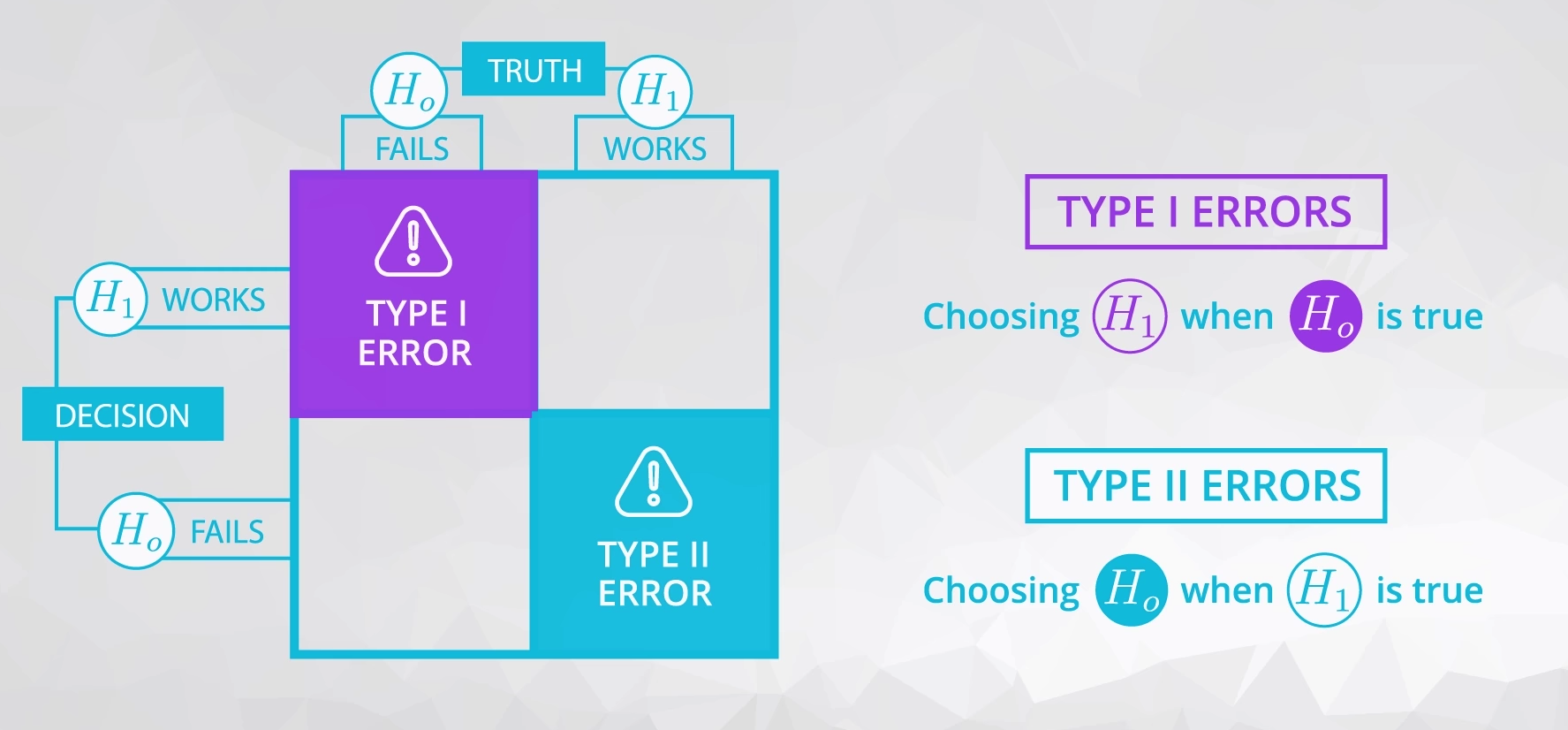13. Quiz: Types of Errors - Part III
Types of Errors - Part III
In the previous video, you saw another example of error types in hypothesis testing. Use the ideas of the previous video and the image below to answer the following quiz questions. The quizzes will attempt to connect the specifics of the previous example to the general rules of setting up hypotheses.

SOLUTION:
- The null hypothesis in the previous example was that the parachute doesn't open, as it is safer to assume none of the parachutes open until enough data suggests that they do open.
- The alternative hypothesis is generally what we want to prove to be true: that a drug is effective, that a new page performs better, or that the parachute is safe.
- The alternative is that the parachute opens, which makes sense as it is what we would like to prove.
QUIZ QUESTION::
Match each value to the correct description.
ANSWER CHOICES:
|
Description |
Value |
|---|---|
The threshold for type I errors. |
|
Deciding the alternative is correct when really the null is true. |
|
Deciding the null is correct when really the alternative is correct. |
|
Choosing the parachute doesn't open, when actually it does. |
|
Choosing the parachute opens, when actually it doesn't. |
SOLUTION:
|
Description |
Value |
|---|---|
|
The threshold for type I errors. |
|
|
Deciding the null is correct when really the alternative is correct. |
|
|
Choosing the parachute doesn't open, when actually it does. |
|
|
Deciding the null is correct when really the alternative is correct. |
|
|
Choosing the parachute doesn't open, when actually it does. |
|
|
Deciding the alternative is correct when really the null is true. |
|
|
Choosing the parachute opens, when actually it doesn't. |
|
|
Deciding the alternative is correct when really the null is true. |
|
|
Choosing the parachute opens, when actually it doesn't. |